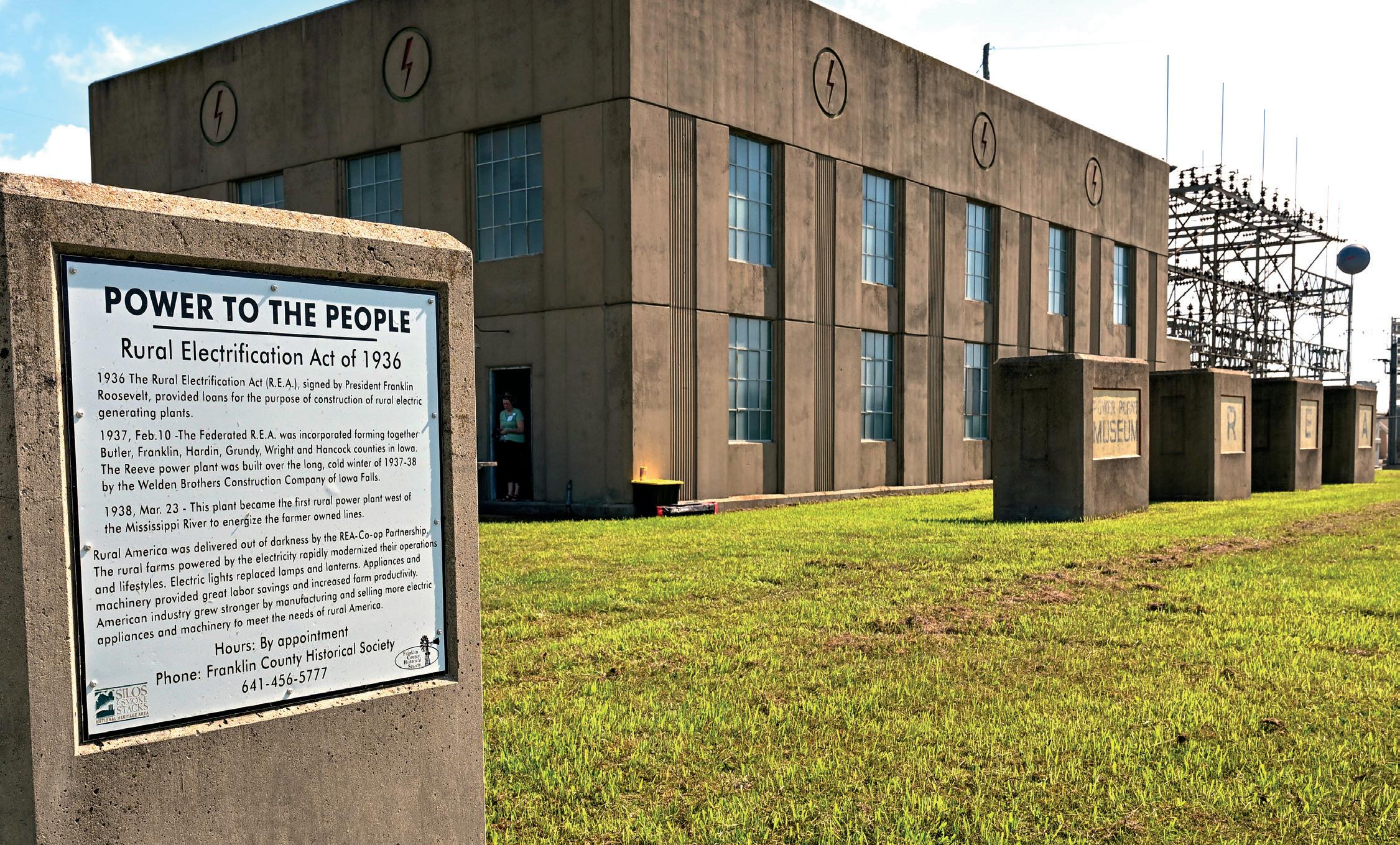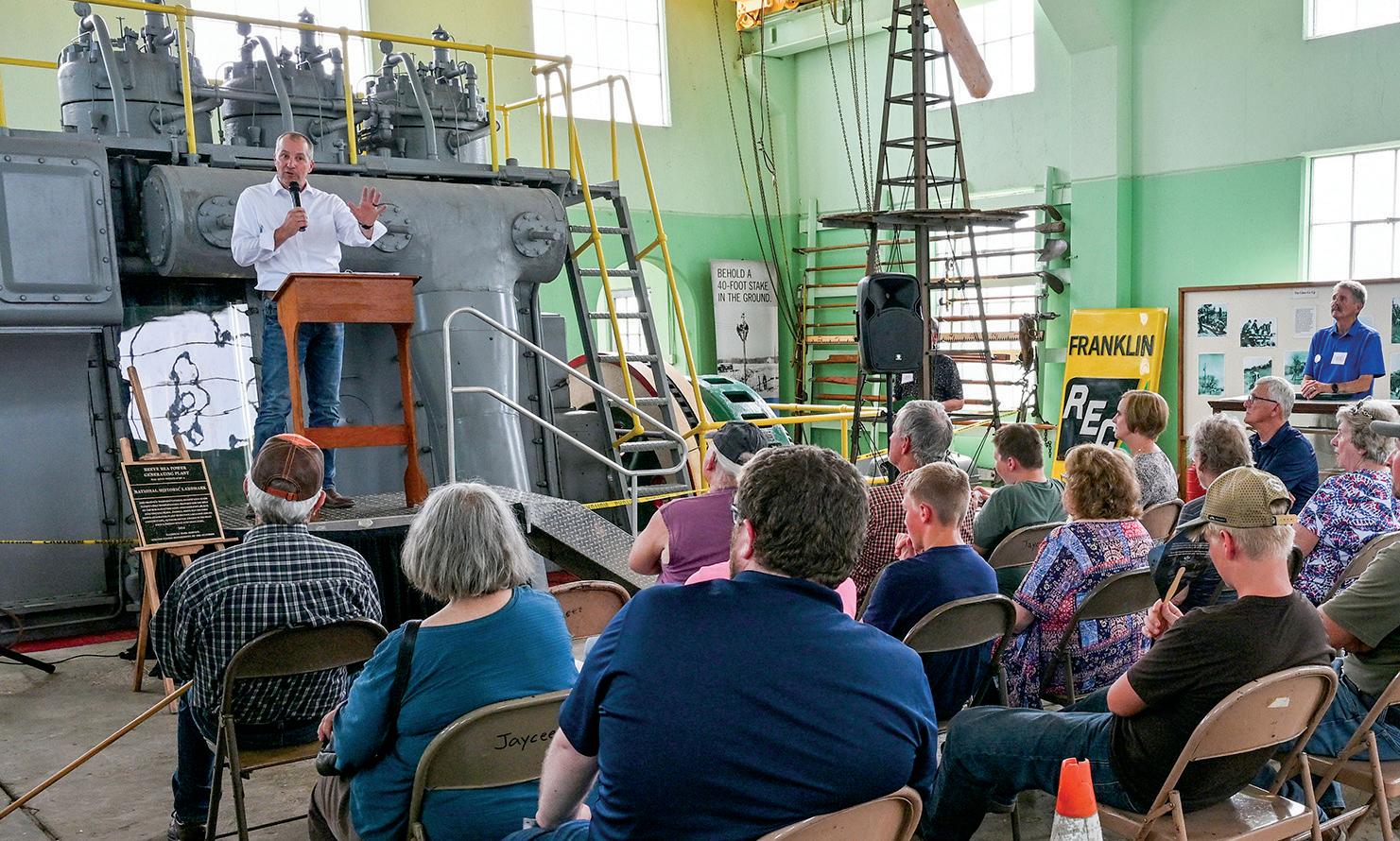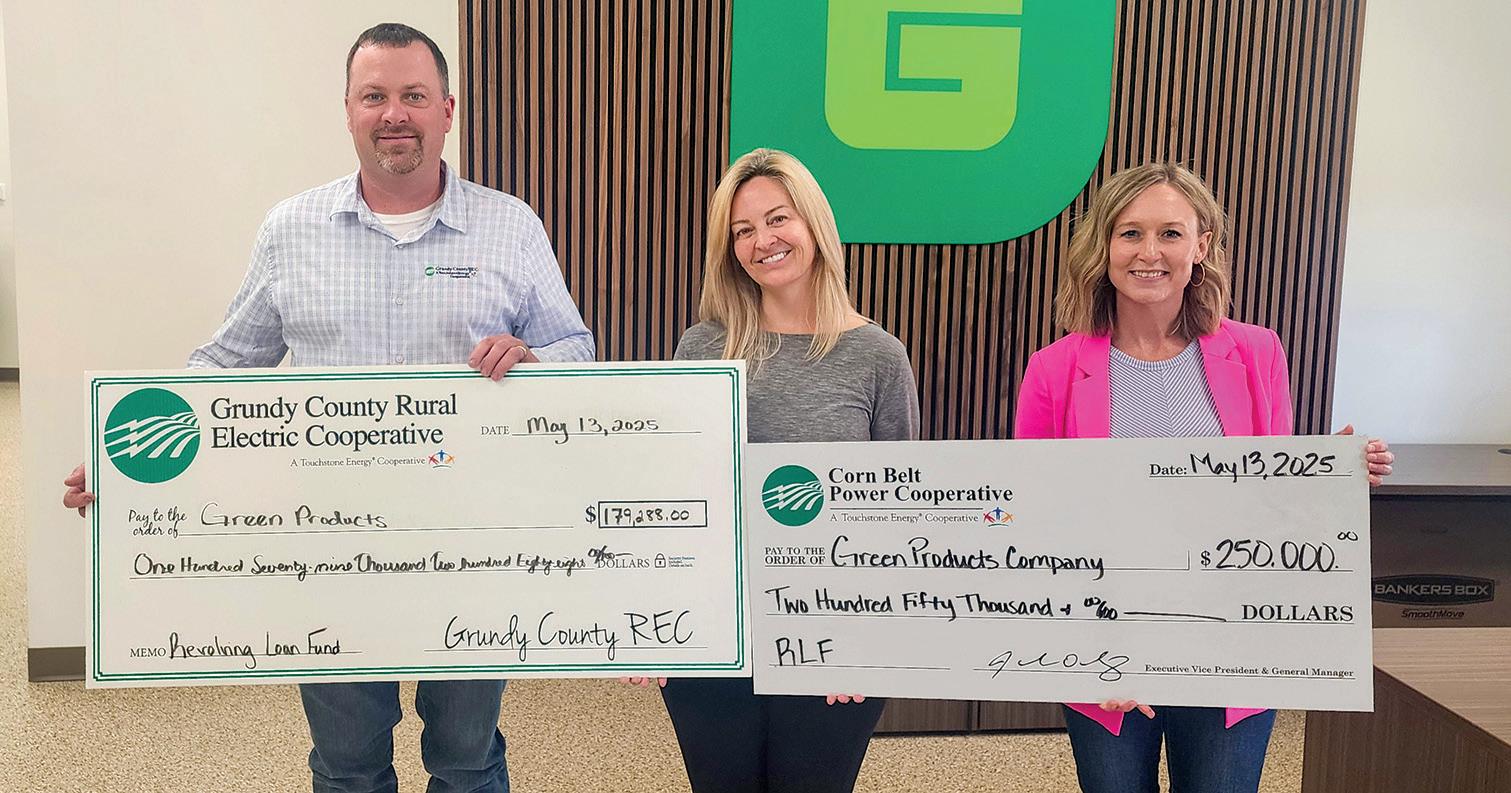WattsWatt WattsWatt Corn Belt Power Cooperative



More than 130 electric cooperative member-owners, directors and cooperative employees from western and north-central Iowa embarked on an educational adventure this summer, participating in three motorcoach tours that showcased the journey from power generation to their homes and businesses. The 36th annual Energy Trail Tour season featured three motorcoach tours departing from Northwest Iowa Power Cooperative (NIPCO) in Le Mars, with tours scheduled June 18-20, June 25-27, and July 9-11.
The three-day educational experience took participants through the Dakotas to visit key facilities operated by Basin Electric Power Cooperative and Western Area Power Administration (WAPA), the primary power suppliers for local distribution cooperatives through their generation and transmission partners NIPCO and Corn Belt Power Cooperative.
Oahe Power Powerhouse and Dam, Pierre, South Dakota, and Big Bend Powerhouse and Dam, Fort Thompson, SD
Participants explored hydroelectric generation at Missouri River facilities Oahe Dam and Powehouse (June tours) and Big Bend Dam (July tour), learning about the engineering marvels of the earthen dams that created Lake Oahe, America’s fourth-largest reservoir (Oahe), and Lake Sharpe (Big Bend). The tours highlight how hydroelectric power plays an important role in an all-of-the-above energy generation mix.
Antelope Valley Station
Members toured Basin Electric’s coalfired power plant, including the turbine deck, control room, and boiler areas, culminating with views from the 17th-floor observation

deck. The visit showcased the value of coal-fired baseload generation and Basin Electric Power Cooperative’s investments in environmental control technologies to reduce emissions.
A drive-through tour of the active surface mine demonstrated lignite coal production and land reclamation efforts. Participants witnessed massive earthmoving equipment in operation at a facility that produces approximately 15 million tons of coal annually while reclaiming about 600 acres of mined land.
Travel on a motorcoach provides an excellent “over-the-road” opportunity to learn about other generation sources and operations that produce valuable byproducts from the production of synthetic natural gas.
Participants learned about the role of wind power in America’s diverse energy portfolio and its contribution to the country’s all-of-the-above energy approach
to securing safe, reliable, cost-effective, and sustainable energy production.
Passengers learned how coal is converted into synthetic natural gas as well as produce valuable byproducts including anhydrous ammonia, carbon dioxide, and diesel exhaust fluid through Basin Electric’s Dakota Gasification Company subsidiary at the Great Plains Synfuels Plant.
Beyond the technical education, participants gained a deeper insight into the cooperative difference, learning about the history of rural electric cooperatives, the Seven Cooperative Principles, and Touchstone Energy’s four service foundations: Integrity, Accountability, Innovation, and Commitment to Community.
The tours combined education with fellowship, creating lasting memories while building appreciation for the complex process of delivering reliable electricity to the communities these cooperatives serve.
Reeve REA power generating plant celebrated as National

Local leaders, community members, and electric cooperative representatives gathered near the Hampton Substation July 9 to celebrate a proud moment in Iowa history—the official recognition of the Reeve REA Power Generating Plant as a National Historic Landmark.
Iowa Secretary of Agriculture Mike Naig attended the ceremony and spoke about the plant’s historic role in rural electrification and agricultural progress. Built in 1937–1938, the plant was the first of its kind west of the Mississippi to be financed by the Rural Electrification Administration. It provided electricity to rural homes and farms at a time when much of rural Iowa was still without power.
The Franklin County Historical Society led the effort to secure the plant’s national recognition. Members spent years researching the site’s significance, documenting its history, and completing the grant applications and paperwork required for National Historic Landmark status. Their commitment to preserving this piece of cooperative history made the designation possible.
Now operating as a museum, the plant features one original diesel engine, control panels, and equipment. It offers a rare
glimpse into the early days of rural power generation and the positive impact it had on rural Iowa. The Reeve Plant is now the 29th site in Iowa to receive National Historic Landmark status, joining notable locations such as the Surf Ballroom, Iowa City’s Old Capitol, and the Herbert Hoover Birthplace.
To schedule a visit to the Reeve REA Power Generating Plant Museum, call the Franklin County Historical Society at 641456-5777.
The event was a celebration of local history, community collaboration, and the enduring legacy of rural electrification.

Celebrating a legacy
Above | Iowa Secretary of Agriculture Mike Naig speaks to attendees July 9 near Hampton about the vital role facilities like the Reeve REA Power Generating Plant played in the early days of rural electrification.
Grundy County REC and Corn Belt Power partnered through their Revolving Loan Funds to support Green Products Company in its latest expansion. Grundy County REC closed a loan May 13 for $179,287, while Corn Belt Power provided $250,000— helping to fund the company’s ongoing growth and facility improvements.
The funding supported the construction of a new office building in rural Grundy County, located adjacent to Green Products’ existing truck shop. The modern facility includes 20 workstations, a spacious breakroom, expanded meeting areas, upgraded restrooms, and a storm shelter large enough to protect the entire workforce on-site.
Founded in 1947 by Clifford Green as an alfalfa dehydrating operation, Green Products Company (GPC) has grown under the leadership of the Schryver family.
In 1952, Jerry Schryver joined GPC as the General Manager and after 20 years of service at the company, Schryver purchased the business. His son Rusty joined the business in December 1974, and son Matt joined in March 1976.
In the mid 80’s, GPC began milling corn cobs and started an over-the-road trucking company. Jerry retired, and Matt and Rusty continued to grow the company into what it is today. The third generation of the

Schryver family has also joined the business.
The Corncob Milling Division of GPC makes an array of products from corncobs. They source their raw material whole cob from seed corn companies. When seed corn is shelled, the cob is a byproduct.
Every fall harvest they put together a large logistical effort to source corncobs from across Iowa, into Nebraska, Minnesota, Illinois, and sometimes
Wisconsin. The Green Products Company Transportation Division has 50 semi tractors with authority in 48 states and Canada.
Grundy County REC and Corn Belt Power were proud to partner in providing funding for the expansion of this rural Iowa business, reinforcing our commitment to community and economic development.
Electric cooperatives are applauding a recent series of actions announced by the Environmental Protection Agency. These actions would alleviate reliability and cost challenges for electric co-ops across the U.S.
The EPA said it will review and reconsider the Biden administration’s power plant greenhouse gas rule. The agency also plans to reconsider other rules hindering America’s energy dominance, including the mercury and air rule, ozone transport rule and power plant wastewater rule. The agency will also address a number of fundamental problems with the coal ash program and take other actions to unleash American energy while protecting the environment.
The National Rural Electric Cooperative
Association, the national trade association that represents electric cooperatives in D.C., flagged concerns with these rules in a letter to EPA Administrator Lee Zeldin
EPA could address harmful regulations for electric co-ops while ensuring reliable and affordable power and promoting a healthy environment.

in January. NRECA CEO Jim Matheson met with Zeldin at EPA’s headquarters to discuss these issues. The letter served as a policy roadmap recommending ways the
The recent EPA announcements are another critical step that puts our nation on a path towards a more reliable and resilient electric grid— and not a moment too soon. The demand for electricity is skyrocketing, yet unrealistic public policy decisions are forcing always-available generation resources to retire faster than they can be reliably replaced. Electric cooperatives appreciate the EPA’s recent actions that could bolster American energy dominance with sound policies that protect our environment––without leaving American families in the dark.
Cody Montgomery, control operator, captured this view of the sky north of Wisdom Station on his rounds just before 9:30 p.m. following a summer storm in Spencer July 7.

July Touchstone Energy Volunteer Challenge winner | Derek Snakenberg, lineman, Grundy County REC, won this month's Volunteer Challenge. He donated his $100 prize to the Veteran's Flagpole Initiative of Waverly.

Corn Belt Power welcomed our newest employee, Vanessa Barney to the team
July 16.Vanessa is Corn Belt Power’s new building custodian.
Originally from New Mexico, Vanessa comes to Corn Belt Power after having been in the area for five years, most recently working for CJ BioAmerica. In her free time, she enjoys outdoor activities with friends and family.
Welcome to Corn Belt Power, Vanessa.


